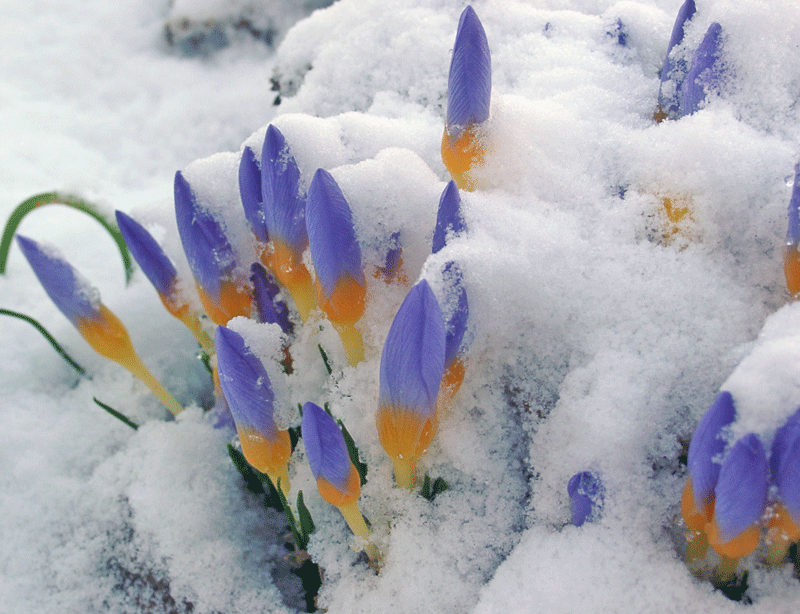Just about the time you think you can’t take another day of the winter drabness, the colorful blooms of crocus appear. If you live in an area where snow blankets the winter landscape, you just may see crocus poke through the whiteness in late winter or early spring. Crocus will bloom ahead of tulips and daffodils. Though short in stature, they’ll still be seen since they are the first plant to bloom in most gardens.
Crocus bulbs are fairly inexpensive. This is a good thing because you’ll want to plant them in a large cluster so they’ll shout out at you from the spring garden. Not only are they inexpensive, they also multiply, meaning you get more bang for your buck as the years go by. Crocus bulbs can be dug and divided in the fall to be replanted in another area of your yard or traded with friends and neighbors.
Crocus can be planted in a rock garden and even in beds and borders. However, they really look cool naturalized in your yard. I like to take handfuls of crocus bulbs and toss them in the general vicinity of where I want to see color. Then, I’ll take my bulb planter and plant them where they’ve landed. The nice thing is, they’ll be done flowering before you mow the lawn for the first time.
When to plant:
Plant crocus bulbs in the fall a couple of weeks before the ground freezes.
Where to plant:
Plant in full sun to partial shade.
Planting depth:
Plant bulbs 2-3 times as deep as they are tall. For most crocus bulbs this will mean 3-4 inches deep. The tips of the bulbs should be pointed upward.
Spacing:
Crocus should be spaced 4-6 inches apart.
How to plant crocus bulbs:
Let’s face it, most bulb planting methods have us spending a lot of time bending over or on our knees. The ProPlugger 5-IN-1 Planting Tool allows you to do most of the hard work of digging your bulb planting holes from a standing position.
To pull plugs, slide the 2″ or 4″ metal depth ring onto the bottom of the main tube to set the desired depth of the planting hole. Or to dig a 6″ deep hole, no depth ring is needed.
(Step, Twist and Pour) Step down on the foot pegs until the depth ring bottoms out against the ground. Give the 5-IN-1 a slight twist to break the soil plug free and pull straight up on the handlebars. To empty the plugs, simply turn the plugger upside down and pour the plugs out of the top of the tube.
The soil gets stored inside the tool as you work, enabling you to dig over a dozen planting holes, one right after another. Place the bulb in the planting hole, pointed tip facing upward. Fill in the hole with the soil you removed with the 5-IN-1. Firm the soil over the bulb with your foot.
Feeding:
In early spring, when the leaf tips begin to poke out of the ground, apply a 5-10-10 fertilizer. About the time of flowering, top dress with a 0-0-10 or 0-0-50 fertilizer. Fertilize in the spring of each year with a 5-10-10 fertilizer or all purpose fertilizer used for feeding flowers. Mulching around the plants with aged compost or well rotted manure will achieve the same effect as a light feeding of fertilizer.
Popular crocus varieties:
There’s about 80 species of crocus. Some of the popular varieties that will pop up in the spring garden catalogs include chrysanthussnowbunting, chrysanthus Advance, flavus Golden Yellow, isauricus Spring Beauty, and ancyrensis Golden Bunch.
Disease and pest problems affecting crocus:
There are few reported pest problems with crocus, provided you purchase quality bulbs and plant in reasonably rich, well draining soil.
Neil Moran is a horticulturist and author of three books on gardening. He is also the creator and author of the garden blog North Country Gardening
Be sure to check out the helpful information on our website, including other uses for the ProPlugger including:

